West Virginia wears quiet like a well-loved quilt, soft at the edges and warm with memory.
People call these towns boring, yet after dark the porches creak with stories and the hills answer with low, steady echoes.
Follow me into eleven corners where time lingers, where rail depots, river bends, and brick storefronts carry a hushed rhythm.
Stay a little longer, and the state’s old songs begin to rise, subtle and true, right beneath the silence.
1. Parsons
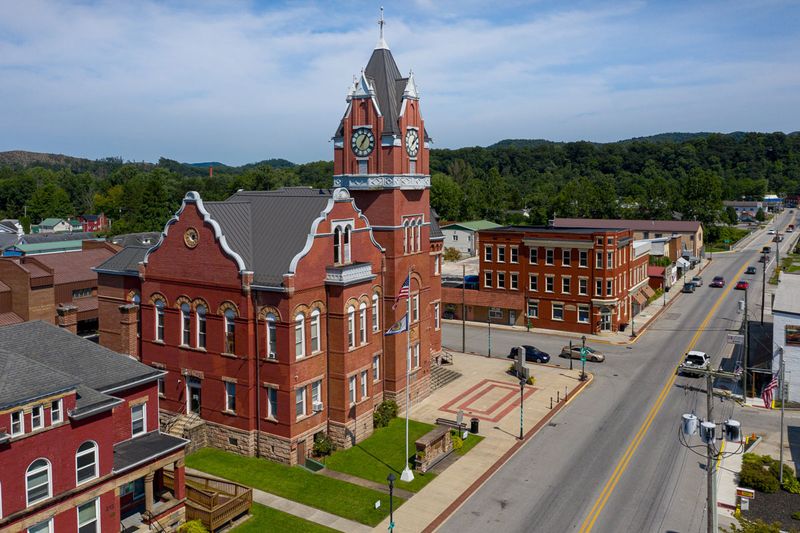
Parsons sits beside the Shavers Fork of the Cheat River, where the water marks time with a steady hush. Downtown is compact, lined with brick, and the historic Tucker County Courthouse anchors the scene with calm authority. In the evening, you hear the river and little else, just the occasional train on distant tracks.
Walk to Mill Race Park for a short, tree-canopied loop that hugs the water. Locals gather for small festivals and heritage events that keep the area’s timber and rail past in view. Trailheads for Blackwater Canyon and the Allegheny Highlands Trail begin within an easy drive, so quiet mornings turn into forested afternoons.
The Depot Welcome Center, housed in a restored building, shares regional history without pretense. You can trace the flood stories and the town’s recovery through photographs and careful exhibits. Outdoor murals add color, hinting at resilience after high water and hard winters.
I like Parsons at dusk most of all, when porch lights blink on one by one. From the bridge, the river looks like a sheet of dark glass ruffled by wind. West Virginia reveals its gentlest voice here, practical and steady, almost shy.
Nearby, the Monongahela National Forest rises like a green wall. Birdsong carries from the banks, and kayakers slip into the current when levels are right. The trails never feel hurried.
Visitors chase rush elsewhere, which leaves Parsons with a gift, space to breathe. Old songs carry across the water as if spoken by cedar and stone. Listen long enough, and the town sings back.
2. Glenville

Glenville curls along the Little Kanawha River, with the university climbing the hill and the town holding the base. Between classes, streets settle into a slow drift, all brick facades and tidy porches. When the campus quiets, you can hear the water moving past sycamores.
At the Gilmer County Historical Society, a weathered building shelters artifacts from homesteads and mills. Docents speak plainly, with a knack for detail that stitches dates to places. The displays feel lived in rather than staged.
The annual West Virginia State Folk Festival centers here, a gathering that brings out square dance callers, dulcimer players, and craft weavers. Even when the festival ends, echoes of ballads linger in the hardware store aisles and the campus lawn. Side streets keep their rhythm, measured and kind.
Riverfront paths open to benches facing the current. I sit and watch light scrape the water as freight trucks hum across the bridge. It is a good spot for unhurried afternoons and a notebook.
Glenville State University’s campus adds a touch of sculpture and brick arches, quiet even when classrooms buzz. Post office lines become chat sessions, the town’s thread stitching neighbor to neighbor. The library serves students and locals with the same steady welcome.
West Virginia feels close here, close enough to reach out and touch in the curve of each hill. The town lets its stories travel gently, not as performances but as conversations. If boring means a place is comfortable with silence, then Glenville is comfortable and wise.
3. Ansted
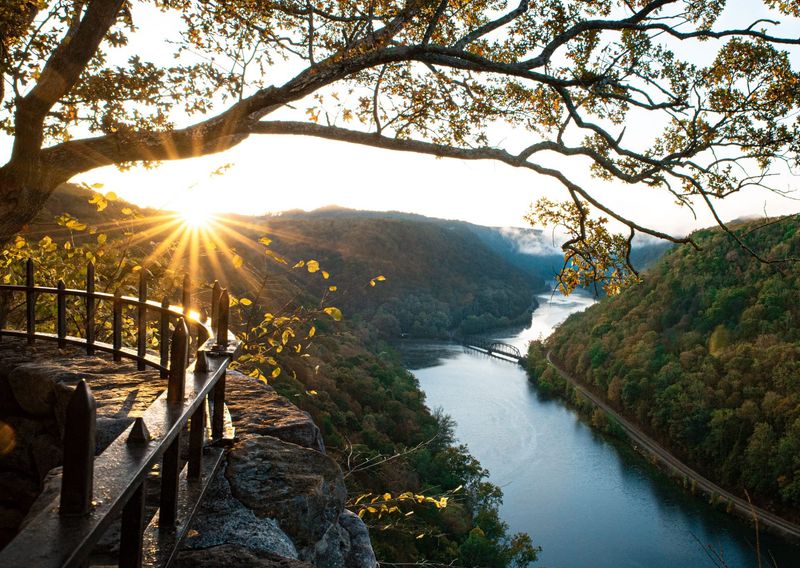
Ansted perches above the New River, close to the big views but sheltered from the rush. Hawks Nest State Park spreads along the rim, with overlooks that make you stop talking and simply look. The town’s neighborhoods trail off into green, then into stone and gorge.
At Hawks Nest Overlook, the river slices through the mountains in a broad curve. The aerial tram, when running seasonally, glides toward the riverbank with a soft hum. It is an easy way to feel the depth of this landscape without a long trek.
Distant from the high-traffic spots, Ansted’s streets feel unrushed, low-key, homely. Contented gardens, small churches, and a scattering of historic homes define the scene. The ruins of old industry still hide among the trees, reachable by marked paths.
Cathedral Falls, just outside town, sprays a lacy curtain of water beside the old highway. It is steps from the parking area, yet the canyon walls hush the road noise. Water pools, mist lifts, and moss glows.
In the evening, the gorge cools and cicadas take the chorus. Porch talk fades to a murmur. West Virginia breathes through ravines like this one, long and low.
Ansted’s pace rewards patience. Map out a loop that touches the overlook, the falls, and the small museum displays around town. You come away with clean air in your lungs and stone dust in your shoes, the kind of souvenir that lingers.
4. Richwood

Richwood sits where the Monongahela’s edge folds into the Cherry River, surrounded by deep forest. Downtown carries tall windows, tiled entries, and ghost-lettered facades. The quiet has texture here, like felt under your fingers.
Visit the Richwood Heritage Center for a compact look at timber, tannery, and music life. Exhibits connect logging camps to dance halls and parades, threading the town’s story without gloss. Volunteers share memories that feel grounded and specific.
Just outside town, the Highland Scenic Highway begins its climb across high country. Trailheads lead to cranberry bogs and spruce edges, places where wind turns language into whisper. Every curve grants a new shade of green.
Murals brighten side streets, and the city hall clock keeps reliable time. The Cherry River Festival animates the calendar with community energy and simple fun. Between events, streets return to a comfortable hush.
Richwood’s sidewalks invite slow photo walks focused on corners, thresholds, and stair rails. Brick patterns repeat like verses from an old tune. The river keeps its own measure as it works past town.
In West Virginia, towns like this hold their shape even as years shift around them. By evening, mountain air settles and voices drop. You leave with a map of textures in your mind, from beadboard ceilings to moss-soft bridge stones.
5. Bramwell

Bramwell collects its history in a single elegant curve of mansions, reminders of coal fortunes that once gathered here. The main street holds a restored depot and storefronts trimmed with woodwork. Trees arch over tidy sidewalks, turning afternoon light into a soft canopy.
The Bramwell Historic District invites a slow loop past turreted homes and stone walls. Signs recount who lived where and why these designs traveled into the hills. The scale is intimate rather than grand, gracious without pretense.
The town’s museum preserves photographs, ledgers, and domestic pieces that map daily life. You get a sense of the people behind the wealth, the seamstresses, gardeners, and clerks. Details bring the story down to earth, window latches and stair spindles included.
Rail heritage lingers around the depot, where benches face the tracks like theater seats. Trains pass at intervals, their rhythm part of the day’s pulse. When it is quiet, wind tests the awnings and leaves answer softly.
Seasonal tours open select homes, and volunteers share carefully kept facts. In between, front porches speak with paint colors and porch swings. Nothing shouts, yet everything stands ready to be noticed.
West Virginia’s coal narrative often rushes toward scale, but Bramwell offers intimacy instead. Here, the old songs travel along picket fences and brick paths. By twilight, the town seems to hum at the exact pitch of the hills.
6. Point Pleasant
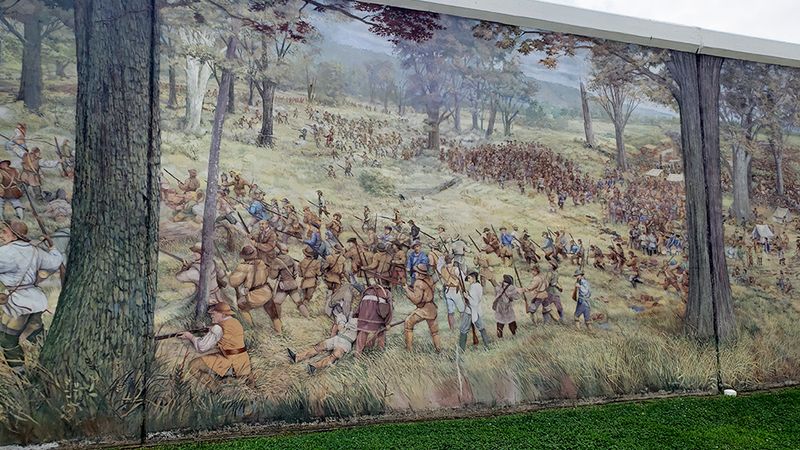
Point Pleasant meets at the mouths of the Kanawha and Ohio, a confluence that shapes the town’s mood. Tu-Endie-Wei State Park marks the site of a pivotal frontier battle with careful plaques and shady lawns. Riverwalk paths reach long views where barges slide by with steady grace.
Downtown murals stitch history into brick, blending myth and memory with bold color. The Mothman Museum gathers folklore into display cases and clippings, a tidy lens on how stories travel. Even if you do not chase legends, the collection reveals how communities process uncertainty.
The West Virginia State Farm Museum sits a short drive away with log structures and vintage equipment. Interiors show kitchens, classrooms, and workshops arranged to feel practical and human-scaled. On quiet days, the grounds carry the sound of birds and wind in grass.
Benches along the floodwall invite lingering. The confluence spreads wide, a low song of current and steel. You watch river traffic without hurry, just the slow theater of water meeting water.
Shops set out antiques and local crafts, and the streets keep their brick grip underfoot. Statues and markers turn corners into small lessons. The park’s shade feels kind in the heat.
Point Pleasant fits West Virginia’s layered story, history mixing with folklore at every turn. Dusk brings a cooler river breeze that moves quietly through the sycamores. The town answers with a soft reply, old and patient.
7. Fayetteville
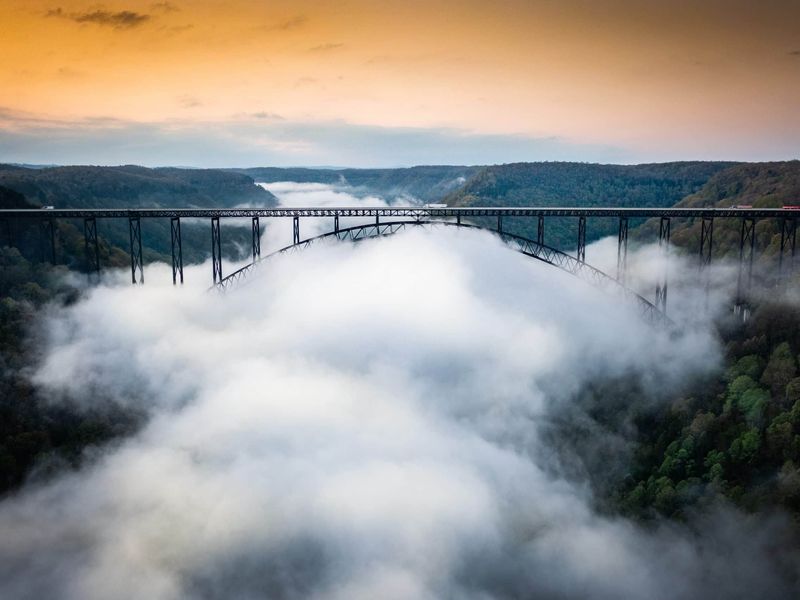
Fayetteville sits at the doorstep of the New River Gorge Bridge, that graceful arc that photographs so well. The town square gathers outfitters, galleries, and porches with rocking chairs. Side streets carry restored cottages that look ready for company.
At the Canyon Rim Visitor Center, boardwalk overlooks frame the gorge with clean lines. Exhibits inside lay out geology and community stories in approachable panels. The view works in all weather, fog or sun.
Fayetteville’s courthouse stands on a tidy lawn with steps that feel made for lingering. Across town, the Fayetteville Town Park trails weave through pines, connecting playgrounds and open fields. Cyclists and walkers share space with comfortable ease.
Art pops up in alleyways and along storefronts, small pieces tucked into brick corners. A few independent shops keep regular hours and friendly windows. Everything feels reachable on foot.
When evening falls, the bridge becomes a silhouette against a band of color. Traffic turns into a soft hum, more presence than noise. On still nights, the gorge collects every whisper and gives it back.
West Virginia’s newest national park made headlines, yet Fayetteville holds its own kindly pace. You can touch the life of the town without chasing any itinerary. It rewards attention with quiet detail, step after step.
8. Ripley
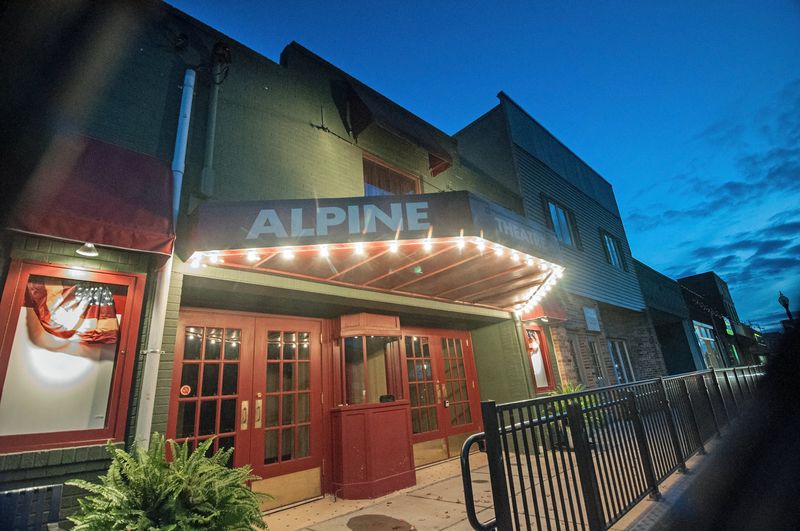
Ripley, the county seat of Jackson County, gathers its days around a broad courthouse lawn. Streets radiate with low storefronts and a tidy grid, a pattern that settles the mind. Farmers markets and community events give the square a familiar heartbeat.
The Alpine Theatre, restored and bright, hosts performances on select dates. When the marquee rests, it still lends the street a cheerful face. The building’s interior glows with careful lighting and clean lines.
At City Park, walking paths and ballfields sit beneath tall trees. Benches circle the playgrounds, giving grandparents a comfortable perch. The rhythm here is steady, measured by footsteps and conversation.
Local shops carry crafts, home goods, and everyday items arranged with practical charm. Schedules are clear, and the welcome is straightforward. Window displays change with the seasons, subtle and neat.
On quiet evenings, Main Street feels like a stage between scenes. Streetlights dot the sidewalks with small pools of gold. Traffic thins to a hush and the courthouse clock keeps count.
Ripley’s reputation for community spirit fits West Virginia well. The town values order, shade, and neighbors who wave from opposite corners. It may seem uneventful, yet the calm has a deep, reliable music.
9. Philippi
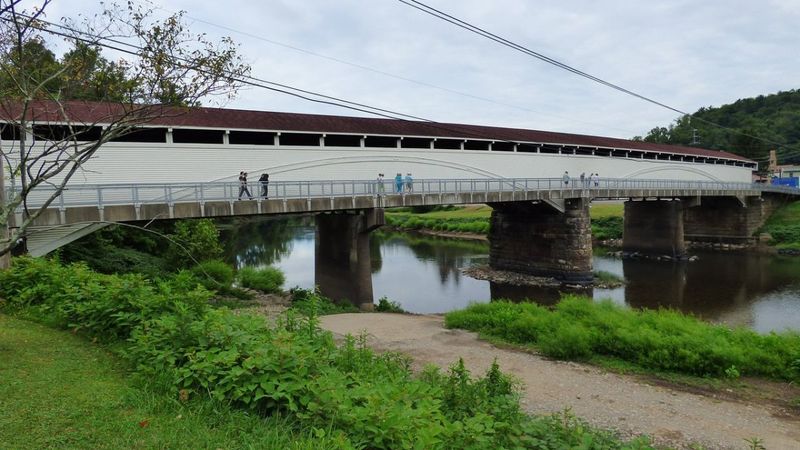
Philippi bends along the Tygart Valley River with a covered bridge at its heart. The twin-arched Philippi Covered Bridge carries traffic, so history and daily life meet right on the planks. Across the street, the Barbour County Historical Museum fills the old railway depot with stories.
The museum’s mementos and Civil War exhibits stick close to the facts. Rooms hold uniforms, instruments, and photographs that restore texture to old names. Volunteers answer questions with patient detail.
Alderson Broaddus University closed, and the transition shifted town routines, yet Philippi’s center remains steady. Shops keep regular hours, and the courthouse lawn stays carefully kept. The river continues its slow conversation beneath the bridge.
Wooded hills crowd the edges of town, offering short drives to trailheads and picnic spots. Wayfinding signs make exploration simple. From the overlooks, you can pick out the bridge roof against the trees like a red bookmark.
Evenings bring a warm fade across brick and shingle. Porch lights flick on, and the bridge lanterns show their age gracefully. The town takes a long breath and holds it.
In West Virginia, few landmarks feel as woven into daily life as this bridge. Philippi lets you walk across history on your way to an errand. The song here is the sound of tires on timber and river on stone.
10. Hinton
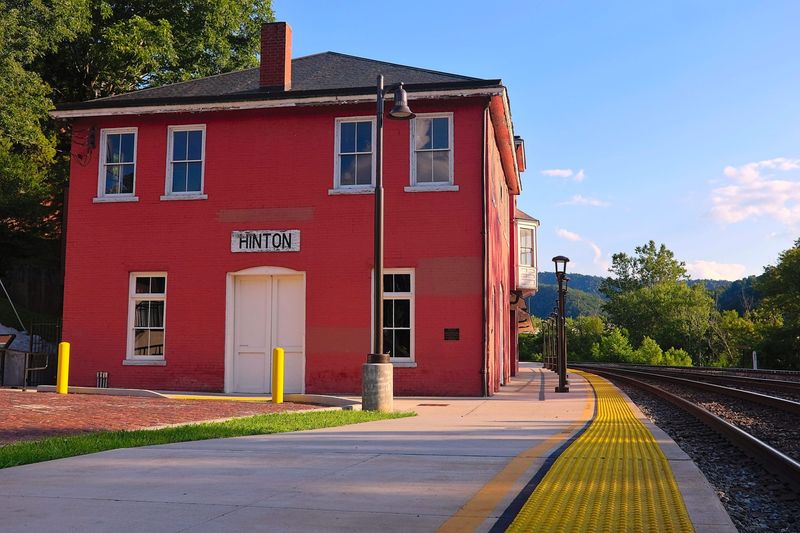
Hinton rests where the New River relaxes into winding pools and the C&O rail history still graces the streets. The Hinton Historic District lines up brick hotels, depots, and storefronts that glow in late light. Riverstone patterns repeat under bridges and along the banks.
At the Hinton Railroad Museum, glass cases hold lanterns, tools, and maps arranged with a railroader’s precision. Nearby, the restored C&O passenger depot stands ready for photographs and quiet study. You can almost hear porters calling the stops.
Bluestone State Park and the Bluestone Lake edges lie just beyond town. Campgrounds, cabins, and trailheads keep the outdoors within easy reach. On still mornings, the lake mirrors the hills with painterly calm.
Side streets tilt gently, leading to porches with deep shade. Murals add color without shouting, a measured hand at the brush. The sidewalks feel made for strolling rather than speed.
Summer brings the Railroad Days festival to the calendar, yet most days remain spare and restful. Benches face the river so visitors can sit and let the scene arrive. Cypress knees and driftwood collect in small coves.
West Virginia’s river towns hold entire chapters of the state’s story, and Hinton turns each page slowly. The town’s voice is low, clipped by rails and softened by water. If you crave quiet, you will hear every word.
11. Buckhannon
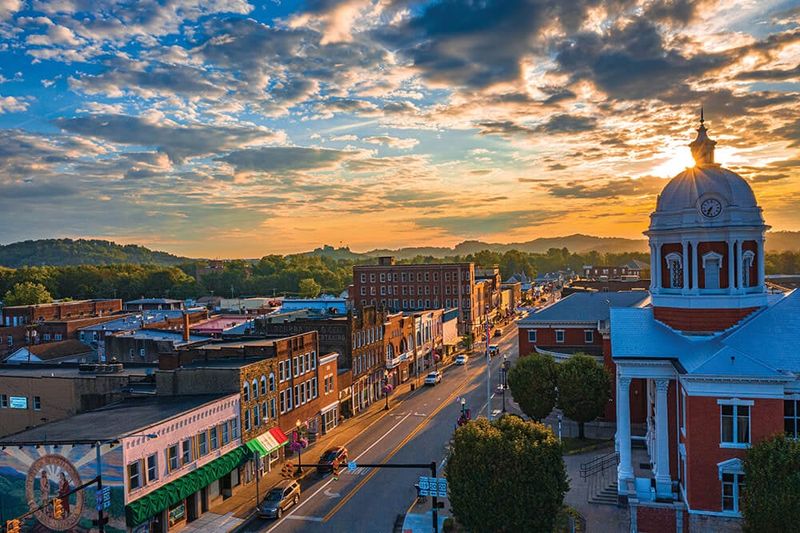
Buckhannon frames its Main Street with handsome brick facades and a courthouse that looks both stately and approachable. The sidewalks are wide enough for small conversations, and planters brighten the corners. The town’s pattern unfolds with an easy, confident rhythm.
West Virginia Wesleyan College sits a short walk away with lawns that encourage lingering. Campus buildings mix stone and brick in balanced lines. In spring and fall, the trees write their own color story across the quads.
Art pops up on utility boxes and exterior walls, small surprises with local signatures. The Colonial Arts Center hosts performances in a restored setting that feels intimate. Even when the stage is dark, the entryway glows.
River access near the Buckhannon Riverwalk Park offers a simple loop beside rustling water. Benches space themselves at good intervals for rests or reading. You move at the speed of the river, unhurried and sure.
Antique shops and boutiques keep steady hours, their interiors curated with a light hand. Windows showcase textiles, books, and handwork arranged for browsing rather than rush. Courteous greetings are the norm.
Buckhannon reflects West Virginia’s knack for modest charm. Evening softens the storefronts, and the courthouse clock lends a gentle cadence. You leave feeling steadier, as if the town shared part of its balance with you.
Dear Reader: This page may contain affiliate links which may earn a commission if you click through and make a purchase. Our independent journalism is not influenced by any advertiser or commercial initiative unless it is clearly marked as sponsored content. As travel products change, please be sure to reconfirm all details and stay up to date with current events to ensure a safe and successful trip.